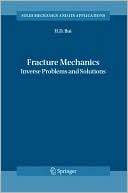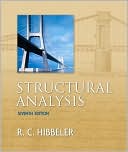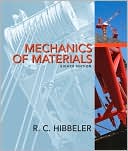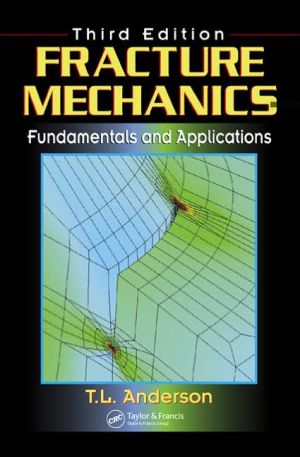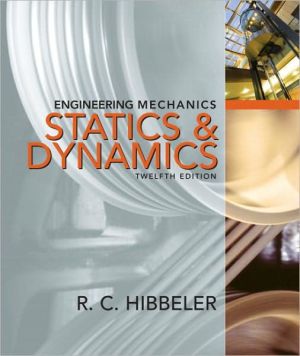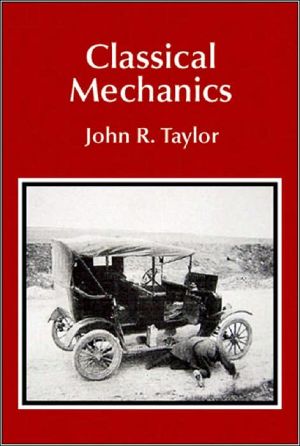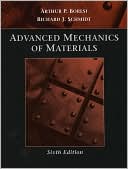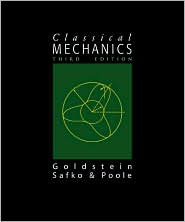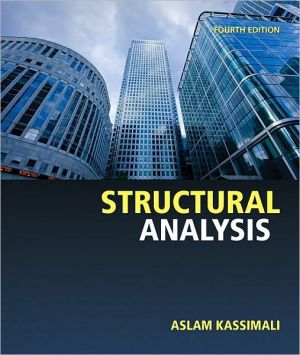Fracture Mechanics: Inverse Problems and Solutions
Search in google:
Today, Fracture Mechanics is a well known topic within the scientific community. Applications of Fracture Mechanics can be found in various fields ranging from solid mechanics and structures to materials sciences and computational mechanics. However, most of these results apply only to linear fracture mechanics of two-dimensional and homogeneous isotropic solids. Therefore there are still incompletely solved problems; such as non-linearity, frictional contact cracks, residual stresses in fracture mechanics, three-dimensional crack geometry, coupled cracked solid/fluid, etc. Recently, new topics related to crack detection based on different physical phenomena have appeared. This book is an attempt to present, in a unified manner, different topics of Continuum and Fracture Mechanics: energy methods, conservation laws, mathematical methods to solve two-dimensional and three-dimensional crack problems. Moreover, a series of new subjects is presented in a straightforward manner, accessible to under-graduate students. These new topics take into consideration the thermodynamics of continuous media, including thermal and dynamical aspects. In addition, the book introduces the notion of duality or symmetry in Solids Mechanics. The loss of symmetry is exploited to provide a unique and powerful tool, called the reciprocity gap functional introduced by the author’s groups, to solve explicitly some important inverse problems arising in crack determination as well as in the earthquake inverse problem.With its emphasis, initially on physical or experimental back-grounds, and then on analysis and theoretical results, rather than on numerical computations, this monograph is intended to be used by students and researchers in solids mechanics, mechanical engineering and applied mathematics.
Preface xiiiNotations xviiColor plates xxiDeformation and Fracture 1Deformation 2Geometric transforms 2Small strain 3Compatibility conditions 4Stress 5Elasticity 6Constitutive laws 6Tonti's diagram in elasticity 7Plasticity 10Experimental yield surfaces 10Prandtl-Reuss equations 13Generalized standard materials 17Fracture 18Introduction to fracture mechanics 18Stress intensity factors 19On the physics of separation 21Different types of fracture 23Brittle fracture criterion 28Energetic Aspects of Fracture 29Griffith's theory of fracture 29Some expressions of G in quasi-statics 31Irwin's formula 32Barenblatt's cohesive force model 34Berry's interpretation of energies 35Stability analysis of multiple cracks 37An inverse energetic problem 40Path-independent integrals in quasi-statics 43The path-independent J-integral 44Associated J-integrals for separating mixed modes 45The T-integral in linear thermo-elasticity 47Lagrangian derivative of energy and the G-[theta] integral 50Generalization of Griffith's model in three dimensions 52A local model of viscous fracture 54A non local model of fracture 55A dissipation rate model for non local brittle fracture 56Convex analysis of three-dimensional brittle fracture 57Solutions of Cracks Problems 61Mathematical problems in plane elasticity 61Plane strain and antiplane strain 61Plane stress condition revisited 62Complex variables in elasticity 63The Hilbert problem 65The finite crack in an infinite medium 68The auxiliary problem 69Dugdale-Barenblatt's model 72The kinked crack in mixed mode 73An integral equation of the kinked crack problem 74The asymptotic equation 76Crack problems in elastoplasticity 78Matching asymptotic solutions 79A complete solution in plasticity and damage 80A review of non linear asymptotic solutions 85Inverse geometric problem with Coulomb's friction 87Non-uniqueness of solutions 88Frictional crack problem without opening 89The energy release rate of a frictional interface crack 92The frictional interface crack with an opening zone 93Thermodynamics of Crack Propagation 97An elementary example 97Dissipation analysis 99Thermal aspects of crack propagation 101Singularity of the temperature in thermo-elasticity 106Asymptotic solution of the coupled equations 107Dynamic Fracture Mechanics 113Experimental aspects of crack propagation 113Fundamental equations 115Steady state solutions 116Transient crack problems 118Symmetric extension of a crack 118Semi-infinite crack with arbitrary propagation speed 121Diffraction of time harmonic plane wave by a crack 122Path-independent integrals 126Path-independent integrals for moving cracks 126A path-independent integral for crack initiation 128Inverse problems in dynamic fracture 129An experimental method for dynamic toughness 130Identification of energies in dynamic fracture 132Three-Dimensional Crack Problems 135Fundamental tensors in elastostatics 135The Kelvin-Somigliana tensor 135The Kupradze-Bashelishvili tensor 136Fundamental theorems in elastostatics 137Solution of the Neumann boundary value problem 138Solution of the Dirichlet boundary value problem 139Direct methods using Kelvin-Somigliana's tensor 141A planar crack in an infinite elastic medium 143The symmetric opening mode I 143The shear modes 144A planar crack in a bounded elastic medium 145Singularity analysis 147Solutions to some crack problems 149The angular crack in an infinite elastic medium 153The edge crack in an elastic half-space 155On some mathematical methods for BIE in 3D 160The Kupradze elastic potential theory 160On the regularization of hypersingular integrals 162Other regularization methods 165An integral equation in elasto-plasticity 169Non Linear Fracture Mechanics 173Introduction 173Ductile fracture 175Rousselier's model 176The micromechanics of plasticity 182Gurson's model 186Extension of porous plasticity models to aggregates 187Bifurcation problems in plasticity 189A finite strain theory of cavitation in solids 193Abeyaratne and Hou's solution in finite elasticity 196Solution for a creeping material 197The Fluid-Filled Crack 199Introduction 199The leak before break inverse problem 200Empirical models of fluid flow in a crack breach 201Variable breach area 205Wear mechanics 210Wear criterion and wear rate 212Conservation of mass 214Rheology of the third body 214The W-equation for a sliding punch on a half-plane 216Identification of constants 218Hydraulic fracturing of rocks 218The physical problems 218Equations in hydraulic fracturing of rocks 220Capillary phenomenon in fracture mechanics 222The equilibrium crack partially filled with a fluid 223Capillary stress intensity factor 228Viscous fluid flow solution near a moving crack tip 229Equations of the fluid-filled moving crack 229Numerical results 230Crack Detection by Scattering of Waves 233Introduction 233Scattering of acoustic waves 234Detection of a rigid inclusion 235Detection of a flat cavity 238Finite spectrum and finite number of incident waves 240Diffraction of elastic waves 243Non destructive testing of materials. A case study 246Time reversal mirror (TRM) 248Experimental validation of TRM 250The mathematics of time reversal mirror 251Tomographic Evaluation of Materials 253Introduction 253X-rays tomography 254Inverse Radon's transform 255Example of crack detection 257Attenuated Radon transform 258Functional tomography by SPECT and PET 258Novikov's inversion formula 260Conical Radon's transform in Compton scattering 260The conical Radon transform 261Nguyen and Truong's inversion formula 263The Reciprocity Gap Functional for Crack Detection 267Distributed defect and crack 267Planar crack identification in quasi-static elasticity 270Determination of the normal to the crack plane 271Determination of the crack plane 272Determination of the crack shape 272The instantaneous RG functional 273Inverse problem for the heat diffusion equation 277Solution for the crack plane location 279Solution for the crack shape 280Inverse acoustic scattering of a crack in time domain 281Elastodynamic scattering of a crack in time domain 283The observation equation in elastodynamics 284Solution 286The earthquake inverse problem and solution 287Methods of Solution to Inverse Problems 293The ill-posedness of the inverse problem 293General considerations on inverse problems 295Tikhonov's regularization 296Optimal choice of the regularization parameter 298Error estimate 299Optimal control theory 300State equation and optimal control 301Adjoint system of equations 302The dynamic system of quasi-static elasticity 305Smoothing operators 309Transfer matrix operator in elasticity 310Quasi-reversibility method 313Control of partial derivative equations 314Inverse problems in parabolic systems 314Identification of materials 317Stochastic inversion methods 318Tarentola's inversion method 318Kalman's filter 319Duality in solid mechanics and inverse problems 320Residual Stresses in Fracture Mechanics 323An approximate theory of residual stress 323A theory of fracture with initial stresses 324Energy release rate 325Residual stress identification 326Origin of the residual stresses 326Determination of the residual stresses 327Weak Interface Singularities 329The interface crack between dissimilar materials 329Discontinuous Neumann boundary conditions 332Thermo-plastic discontinuity on a composite tube 333Problems and Solutions 337References 349Index 371
